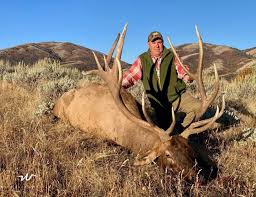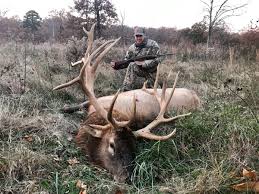Elk hunting is a pursuit that requires skill, patience, and a deep understanding of the terrain and behavior of these majestic animals. For those aspiring to be elk hunting guides, it’s not just about leading clients to a successful hunt; it’s about providing an unforgettable experience immersed in nature’s grandeur. Here are some invaluable tips to excel in the role of an elk hunting guide:
- Know Your Terrain: Familiarize yourself with the hunting grounds like the back of your hand. Understand the elk’s preferred habitats, feeding areas, watering holes, and migration routes. This knowledge will significantly increase your chances of locating elk herds and positioning your clients for a successful hunt.
- Master Tracking Skills: Elk are elusive creatures, adept at elk hunting guides concealing themselves in the wilderness. Develop keen tracking skills to interpret signs such as tracks, droppings, and rubs. Tracking not only helps in locating elk but also provides insights into their movements and behaviors.
- Stay Informed: Keep abreast of local regulations, hunting seasons, and any changes in wildlife management policies. Compliance with hunting laws is crucial for maintaining ethical standards and ensuring the sustainability of elk populations.
- Invest in Quality Gear: Equip yourself and your clients with top-notch gear suited for elk hunting. This includes high-quality rifles or bows, durable clothing, comfortable footwear, optics for scouting, and essential survival gear. Investing in reliable equipment enhances safety and improves the overall hunting experience.
- Safety First: Prioritize safety above all else. Conduct thorough safety briefings before each hunt, emphasizing firearm handling protocols, navigation techniques, and emergency procedures. Ensure that clients are equipped with appropriate safety gear such as blaze orange clothing and first-aid kits.
- Understand Elk Behavior: Study elk behavior patterns to anticipate their movements and reactions to different stimuli. Learn the various vocalizations and body language signals elk use to communicate with each other. This understanding enables you to adapt your hunting strategies accordingly, increasing the likelihood of a successful encounter.
- Practice Stealth and Patience: Elk have acute senses and can detect the slightest disturbance in their environment. Practice stealthy movement techniques to avoid detection, such as moving slowly and minimizing noise. Exercise patience during stakeouts, as waiting quietly for the opportune moment often yields the best results.
- Utilize Calling Techniques: Master the art of elk calling to attract and lure bulls within range. Experiment with different calls, including bugles, cow calls, and grunt tubes, to mimic natural elk vocalizations. Effective calling can draw elk closer for a clear shot, making it a valuable skill for any hunting guide.
- Emphasize Ethical Hunting Practices: Instill a culture of ethical hunting among your clients, emphasizing principles such as fair chase, selective harvesting, and respect for wildlife. Encourage responsible shot placement to minimize suffering and ensure clean kills. By promoting ethical practices, you contribute to the conservation of elk populations and preserve the integrity of the hunting experience.
- Continuously Improve Your Skills: Never stop learning and honing your craft as an elk hunting guide. Seek opportunities for professional development through workshops, seminars, and field experiences. Surround yourself with experienced mentors and fellow guides to exchange knowledge and share insights. By continuously improving your skills, you elevate the quality of your guiding services and enrich the hunting experiences of your clients.
Becoming a proficient elk hunting guide requires dedication, expertise, and a deep reverence for nature. By following these tips and embodying the values of stewardship and conservation, you can lead memorable hunting adventures that forge lasting connections between hunters and the wild landscapes they inhabit.

